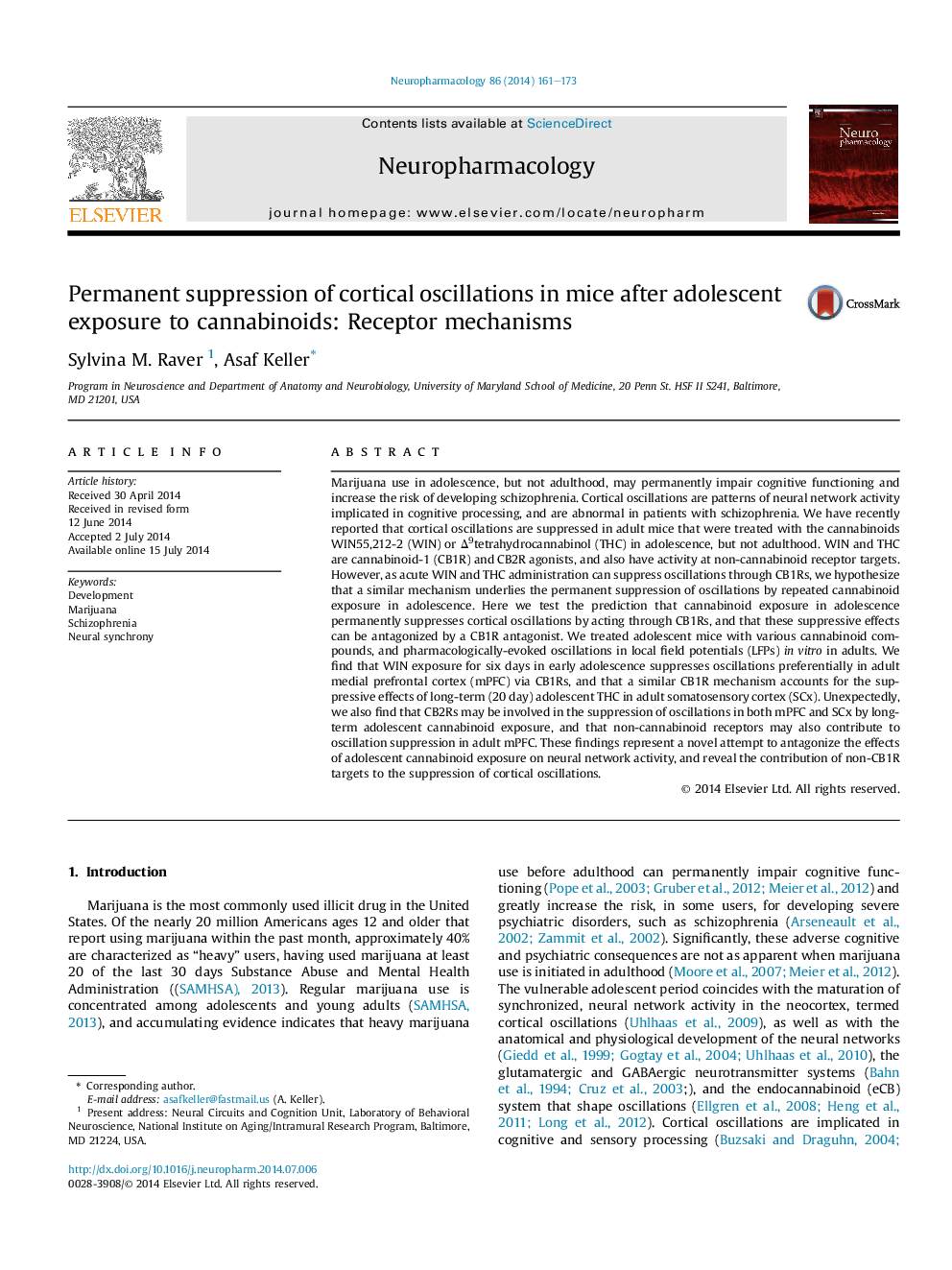| Article ID | Journal | Published Year | Pages | File Type |
|---|---|---|---|---|
| 5814187 | Neuropharmacology | 2014 | 13 Pages |
â¢Early-adolescent WIN exposure suppresses oscillations in adult mPFC.â¢The suppression of cortical oscillations occurs through activation of CB1Rs.â¢Long-term adolescent THC exposure suppresses oscillations in adult SCx through CB1Rs.â¢Oscillation suppression by adolescent cannabinoids also involves CB2Rs and non-CBRs.
Marijuana use in adolescence, but not adulthood, may permanently impair cognitive functioning and increase the risk of developing schizophrenia. Cortical oscillations are patterns of neural network activity implicated in cognitive processing, and are abnormal in patients with schizophrenia. We have recently reported that cortical oscillations are suppressed in adult mice that were treated with the cannabinoids WIN55,212-2 (WIN) or Î9tetrahydrocannabinol (THC) in adolescence, but not adulthood. WIN and THC are cannabinoid-1 (CB1R) and CB2R agonists, and also have activity at non-cannabinoid receptor targets. However, as acute WIN and THC administration can suppress oscillations through CB1Rs, we hypothesize that a similar mechanism underlies the permanent suppression of oscillations by repeated cannabinoid exposure in adolescence. Here we test the prediction that cannabinoid exposure in adolescence permanently suppresses cortical oscillations by acting through CB1Rs, and that these suppressive effects can be antagonized by a CB1R antagonist. We treated adolescent mice with various cannabinoid compounds, and pharmacologically-evoked oscillations in local field potentials (LFPs) in vitro in adults. We find that WIN exposure for six days in early adolescence suppresses oscillations preferentially in adult medial prefrontal cortex (mPFC) via CB1Rs, and that a similar CB1R mechanism accounts for the suppressive effects of long-term (20 day) adolescent THC in adult somatosensory cortex (SCx). Unexpectedly, we also find that CB2Rs may be involved in the suppression of oscillations in both mPFC and SCx by long-term adolescent cannabinoid exposure, and that non-cannabinoid receptors may also contribute to oscillation suppression in adult mPFC. These findings represent a novel attempt to antagonize the effects of adolescent cannabinoid exposure on neural network activity, and reveal the contribution of non-CB1R targets to the suppression of cortical oscillations.
